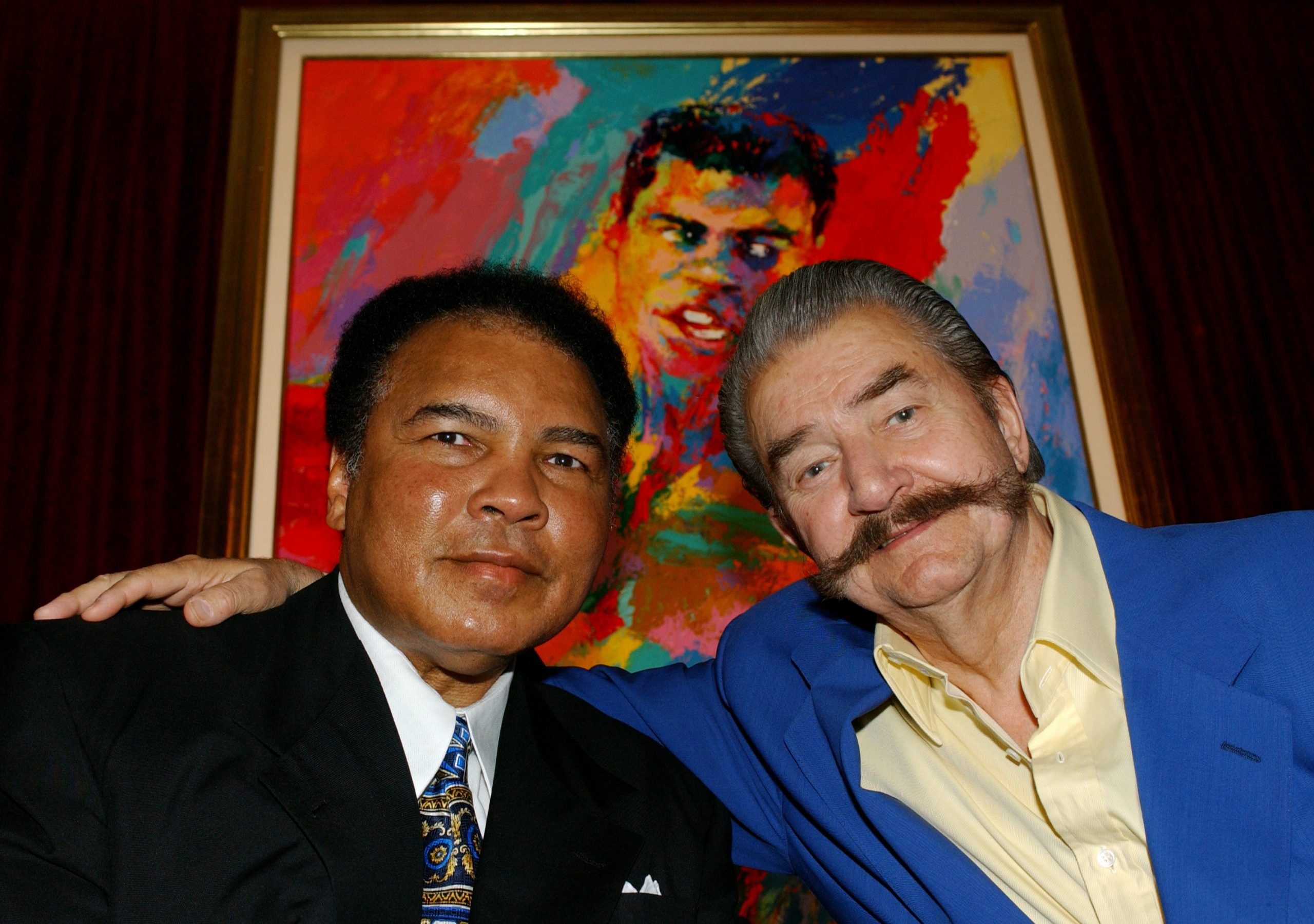
Muhammad Ali’s artworks have periodically cropped up at auction, and hammered handsomely, in the eight years since the legendary boxer’s death. But in LeRoy Neiman: The Life of America’s Most Beloved and Belittled Artist, the first biography neither penned nor commissioned by the late painter, author Travis Vogan details a fascinating subsection of Ali’s oeuvre, known as his “voodoo doodles.” During their friendship, Neiman helped Ali created these oft-overlooked artworks, which manifested some of the fighter’s greatest victories.
George Kalinsky, Muhammad Ali working out at the 5th St. Gym in Miami (1965). Courtesy George Kalinsky.
According to Vogan, sportscaster Jack Drees introduced Neiman to Ali in May 1962. At that point, Neiman was mostly known as an illustrator for Playboy. During a visit to New York to see his gallerists, Neiman caught a fight at St. Nicks Arena on West 66th Street between Billy Daniels and an unknown, ascendant boxer named Cassius Clay, Muhammad Ali’s given name. Drees took Neiman backstage to meet Clay ahead of the match. Neiman, enraptured by Clay’s physical beauty, dashed off a sketch. To the artist’s surprise, Clay, who’d helped his muralist father at work growing up, did a drawing of his own next to it, which he signed “By The Great Cassius Clay—Next Champ by 1963.”
The next Clay fight that Neiman saw was in 1963 at Madison Square Garden; he painted it for Playboy. Later that year, coach Angelo Dundee invited Neiman to watch Clay train in Miami Beach for his looming championship match against Sonny Liston. Neiman and Clay spent mornings drawing, Vogan noted. Clay had not been favored to win the February 1964 match, and shocked the world when he did. Neiman’s early support earned him a coveted spot in Clay’s inner circle as he ascended to smack-talking, fast-shuffling renown.
LeRoy Neiman, Muhammad Ali and Sonny Liston (1965). Courtesy LeRoy Neiman Foundation.
Clay changed his name to Muhammad Ali the month after, and began defending his title. Neiman coached Ali as he made sketches that Neiman dubbed “voodoo doodles,” which were intended to supplement Ali’s rhyming taunts, but in some cases predicted, perhaps even spurred, his victories.
In a 1965 drawing ahead of his rematch against Liston, Ali drew the other boxer flying out of the ring as the referee entreats Ali to relent. Ali then proceeded to beat Liston with his infamous “phantom punch.” The following year, at a press conference ahead of a fight with Cleveland “Big Cat” Williams, Ali presented a drawing that portrayed his opponent as a scaredy cat. Neiman’s journal recounts that Williams made a predictive drawing of his own in response, and gave it to him.
Muhammad Ali, Sting Like a Bee (1978). Courtesy of Bonhams New York, collection of Rodney Hilton Brown.
Ali even stayed up late making a voodoo doodle the night before his 1967 Madison Square Garden match against Zora Foley—Ali’s final fight before he was suspended from the sport for refusing induction into the military during the Vietnam War. Neiman considered the work of watercolor and marker Ali’s most ambitious to date. He won.
Some of these voodoo doodles are scattered throughout private collections, but most live at the Muhammad Ali Center in Louisville. They’re accessible via a digital exhibition, but beyond that, they’re typically kept under lock and key. Vogan couldn’t even print them in his book. Perhaps the world isn’t ready for the power these drawings hold.
What’s the deal with Leonardo’s harpsichord-viola? Why were Impressionists obsessed with the color purple? Art Bites brings you a surprising fact, lesser-known anecdote, or curious event from art history.